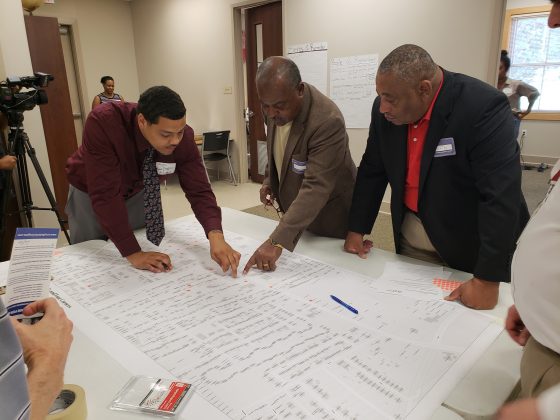When community leaders consider how to revitalize once thriving neighborhoods, they often make a common mistake. They only look to the future to envision what their community could look like, how prosperous it could become.

But what if, in addition, they looked to the past? What can be learned from those days when a bustling economy supported a small neighborhood where residents could live, work, and play? By mining their past, communities can help chart a new future by learning from and preserving their neighborhoods’ history and culture.
The Acadiana Planning Commission (APC) in Lafayette, Louisiana, is committed to engaging in a creative process as it implements the first Community-Wide Environmental Protection Agency (EPA) Brownfields Assessment grant to be awarded in the Acadiana region. A small team representative of the local government, nonprofit sector, and community residents is working with Groundwork USA’s Equitable Development Technical Assistance team to reimagine how the process for brownfields reuse in Lafayette’s Four Corners neighborhood can ultimately lead to greater intergenerational cohesion, preserve cultural traditions, and honor the history of their community. Working behind the scenes with the APC, Groundwork USA’s TA team is providing resources and building knowledge and skills around brownfields reuse to ensure local community members are best able to advocate for their own development agenda.
The Four Corners neighborhood, named for the four intersections created by two major throughways, is home to just over 3,000 residents. Like many mid-sized US cities, light manufacturing drove Lafayette’s early economy, beginning with the introduction of the railroad in the 1880s and oil manufacturing businesses in the 1940s and 1950s. Four Corners was the base for this industrial hub, resulting in a community where residents had convenient access to employment, affordable housing, and local businesses, such as diners and gas stations, that also served the community as social spaces.

Unfortunately, the same forces that ushered an economic boom in the Four Corners neighborhood also contributed to its economic decline. With the oil bust of the 1980s and the development of an additional highway that bypassed the neighborhood, Four Corners experienced a loss of jobs and decline in commercial investment. As other parts of Lafayette grew, Four Corners was left behind.
To jumpstart Four Corners residents thinking about their community’s future, APC held a recent kickoff event for a series of intergenerational community visioning projects using PhotoVoice. PhotoVoice is a community-based participatory research method that captures individuals’ voices and visions about their lives, their community, and their concerns via photography. Groundwork USA’s technical assistance team loves this community engagement strategy and has developed our own Neighborhood Voices curriculum that incorporates similar engagement techniques.
The kickoff event set the stage for the entire project by creating a bank of historical stories, memories, and artifacts from long-time community residents. Residents gathered together to share memories of people, places, and events, and used large community maps to help them begin to think about possible reuses for brownfield sites in their community.
The next step is to connect Four Corners’ long-term residents with its youth to create space for an intergenerational conversation about their community’s past — and future. To promote this, youth from Bridge Ministries and Boys and Girls Club of Acadiana will head out into Four Corners, photographing places of significance to them.

“You have your younger generation, and you have a very older generation, and we want them to be able to learn from each other. We are using various forms of technology to capture the information today, so it’s not just collecting that historical information, but it’s also connecting various generations,” says APC Communications Director Deidra Druilhet in an interview with KATC3.
Just as older residents will use the artifacts they’re collecting to tell the story of Four Corner to their community’s younger generation, local youth will use the photos they capture to share their perspectives on the community with neighborhood elders. APC will host three community events showcasing collected photos, artifacts, and stories with themes of the past, present, and future. A final collection of all materials will be displayed at a local gallery, bringing the community together and gathering a vision for the future reuse of brownfields in the Four Corners neighborhood.
Groundwork USA will continue to support APC as they move forward in this deep community engagement and visioning project. We are excited to continue working alongside APC as a thought partner, troubleshooter, and problem solver as they prepare for their first intergenerational PhotoVoice workshop and beyond!
Stacey Moran is Groundwork USA’s Interim Operations Director and a member of the Groundwork USA Equitable Development Technical Assistance team.
